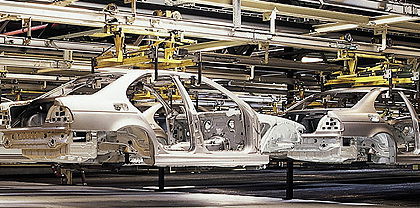- Home » News » World News
Industrial firms lose a day a month to machine failures

Machine failures are causing large industrial facilities to lose an average of more than a day of production (27 hours) every month, at a cost of hundreds of millions of dollars a year, according to a new survey by the UK machine health monitoring specialist, Senseye. The study, based on interviews with maintenance, engineering and IT professionals in 72 multinational industrial and manufacturing organisations operating in 21 countries, finds that, on average, large plants lose 323 production hours a year. The cost of lost revenue, financial penalties, idle staff time and restarting lines averages $532,000 per hour, or $172m annually per plant.
Senseye has also extrapolated its findings to the Fortune Global 500 manufacturing and industrial firms and estimates that together they lose 3.3 million hours each year to unplanned downtime. It calculates the cost of this downtime to be $864bn – equivalent to 8% of their annual revenues.
The study – called The True Cost Of Downtime – reveals that more than two-thirds (72%) of the industrial organisations surveyed have made predictive maintenance a strategic objective, and that 20% have established in-house predictive maintenance teams to lead these initiatives. More than half (51%) of organisations say they have already performed some form of condition monitoring, while 87% collect at least some of the data that can be used to support predictive maintenance.
“Unplanned downtime is the curse of the industrial sector,” comments Senseye’s chief global strategist, Alexander Hill. “When expensive production lines and machinery fall silent, organisations stop earning, and those investments start costing, rather than making, money. The costs can spiral to well over $100,000 per hour for large manufacturers in almost all industrial sectors."
"With this report,” he adds, “Senseye has started to answer crucial questions, such as the true cost of downtime for large industrial organisations, and the kind of savings companies could make by using techniques such as predictive maintenance to help prevent breakdowns and reduce unplanned downtime.”
According to the survey, unplanned downtime is most severe in the automotive sector, where plants lose an average of 29 production hours a month, at the cost of $1.3m per hour. As a result, Senseye estimates that FG500 vehicle and parts manufacturers are losing $557bn and 414,800 hours a year. Two thirds (67%) of the automotive companies in the survey reported that predictive maintenance is now a strategic objective for them.
In the FMCG (fast-moving consumer goods) and CPG (consumer packaged goods) sectors, manufacturers are losing 25 hours a month to unplanned downtime at a cost of $23,600 per hour. Across the companies in the FG500, this amounts to 1.5 million hours and $35 billion lost every year.
Mining, metals and other heavy-industrial companies lose 23 hours per month of production time due to machine failures at the cost of $187,500 per hour. This equates to 1.2 million hours of unplanned downtime a year, costing FG500 companies in this sector $225bn.

Oil and gas producers suffer 32 hours of unplanned downtime each month, on average, at the cost of $220,000 per hour, amounting to $84m per facility. In refineries alone, losses to FG500 members are estimated to total $47bn from 213,000 downtime hours. Some 82% of oil and gas respondents report that predictive maintenance is a strategic objective – the highest proportion of the sectors surveyed.
“One of the biggest challenges manufacturers face is reducing the amount of unplanned downtime and the figures in Senseye’s report clearly show the huge cost impact of not doing this,” comments Jim Davison, regional director for the South of England at the UK manufacturers’ association, Make UK. “What is clear, is that predictive maintenance can play a crucial role in not only reducing costs, but also boosting productivity at a time when manufacturers need to be using every tool at their disposal to meet the demands of an ever-changing industry.”
Senseye, whose headquarters are located in Southampton, UK, specialises in software for AI-driven machine health management.
Senseye: Twitter LinkedIn Facebook





